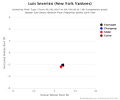Sevy is back and better than ever
After dealing with shoulder and lat injuries for most of the season, Yankee ace Luis Severino returned to the mound earlier this month. For a team decimated by injuries and with questions about the starting rotation, the return of Sevy might be the Yankees’ secret weapon in the playoffs.
In 3 starts, Sevy has pitched 12 innings with a 1.50 ERA, 2.13 FIP, and 3.95 xFIP. In that short time span, he has a K% of 35.4% and a BB% of 12.5%, both of which would be career highs. Of course small sample caveats apply, but it’s encouraging Sevy has looked good and had some great results. Let’s take a look at how he has been doing it and what is different this year compared to his past few season.
How he looks
When any pitcher returns from a serious arm injury, the first thing I look for is any change in release point. Arm injuries tend to lead to lower release points which is a concern because the injury might not be fully healed. Additionally, batters can pick up on release point changes and adjust. Here are Sevy’s release points on his various pitches over the past few seasons:
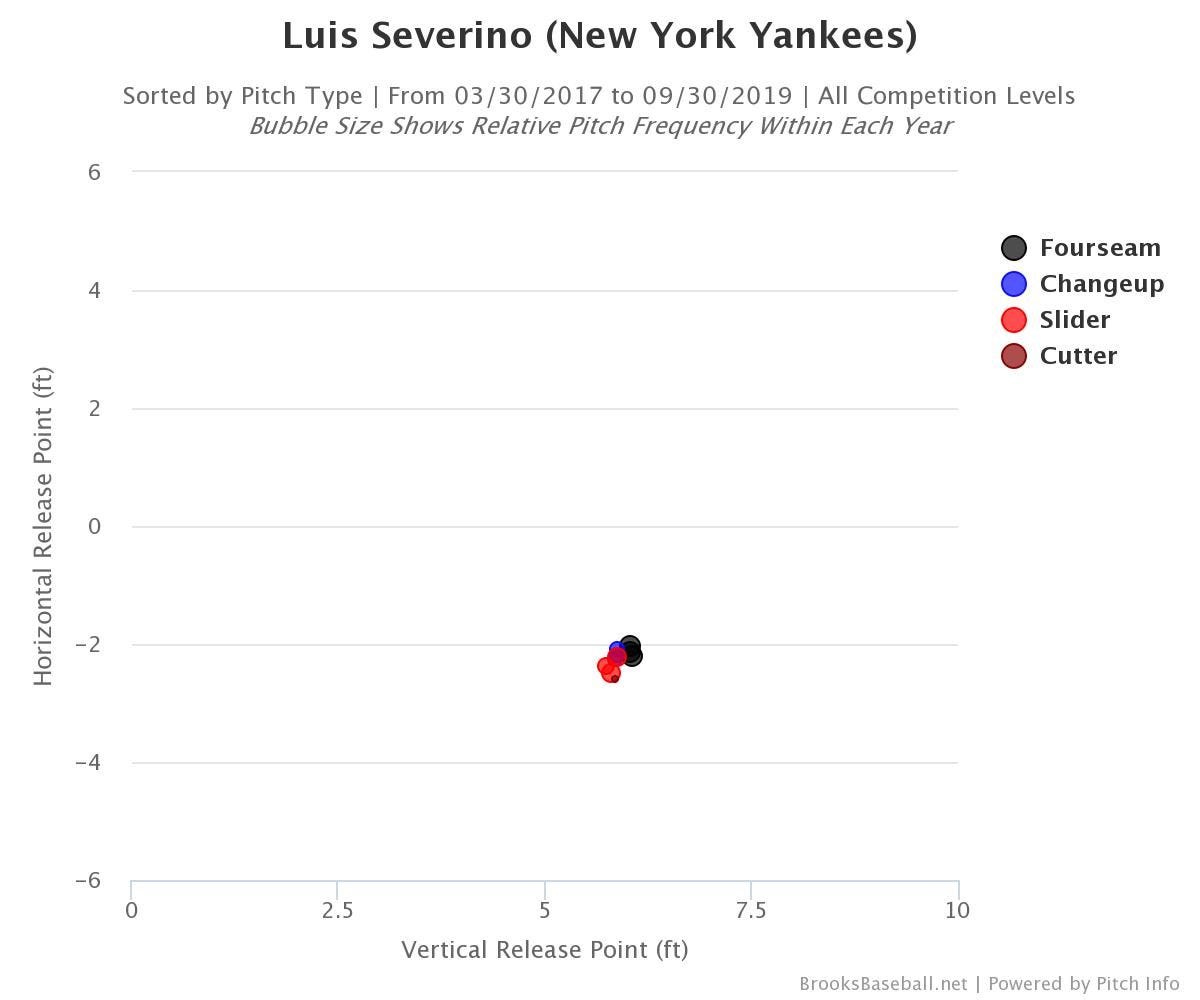
That graph shows his release point on his fastball, changeup, and slider over the past 3 seasons. What’s great about that graph to me is: 1. All three of his pitches have similar release points so batters cannot pick up which pitch he is throwing based on arm slot and 2. The 2019 release points are similar to the 2017-2018 release points. To me, that tells us Sevy is recovered from the injury and able to throw the ball like he has before.
I also want to take a look at location and command because that is often a struggle for pitchers when they return from injury:
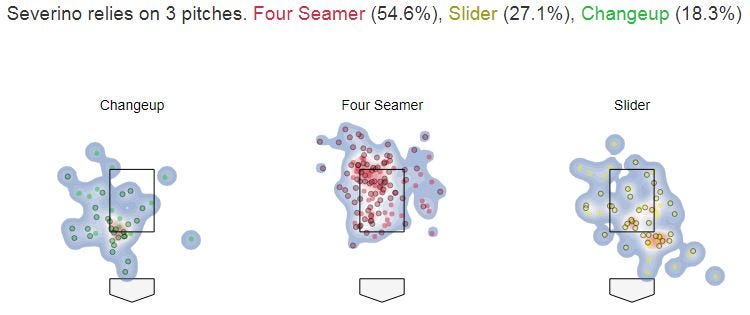
You see fastballs up, sliders low and away to righties and changeups low and away to lefties. There’s also more variation in the slider than before, and we’ll talk about that later. Though for now, this looks encouraging. He is able to generally throw his pitches where he wants to. Moving forward, I would look at the fastball locations. You see several pitches missing the outside corner to righties or very far in on lefties. That looks like he is opening up a little on the pitch, maybe to get some more velocity, and is something to work on mechanically.
Let’s take a look at his pitch mix compared to previous years:
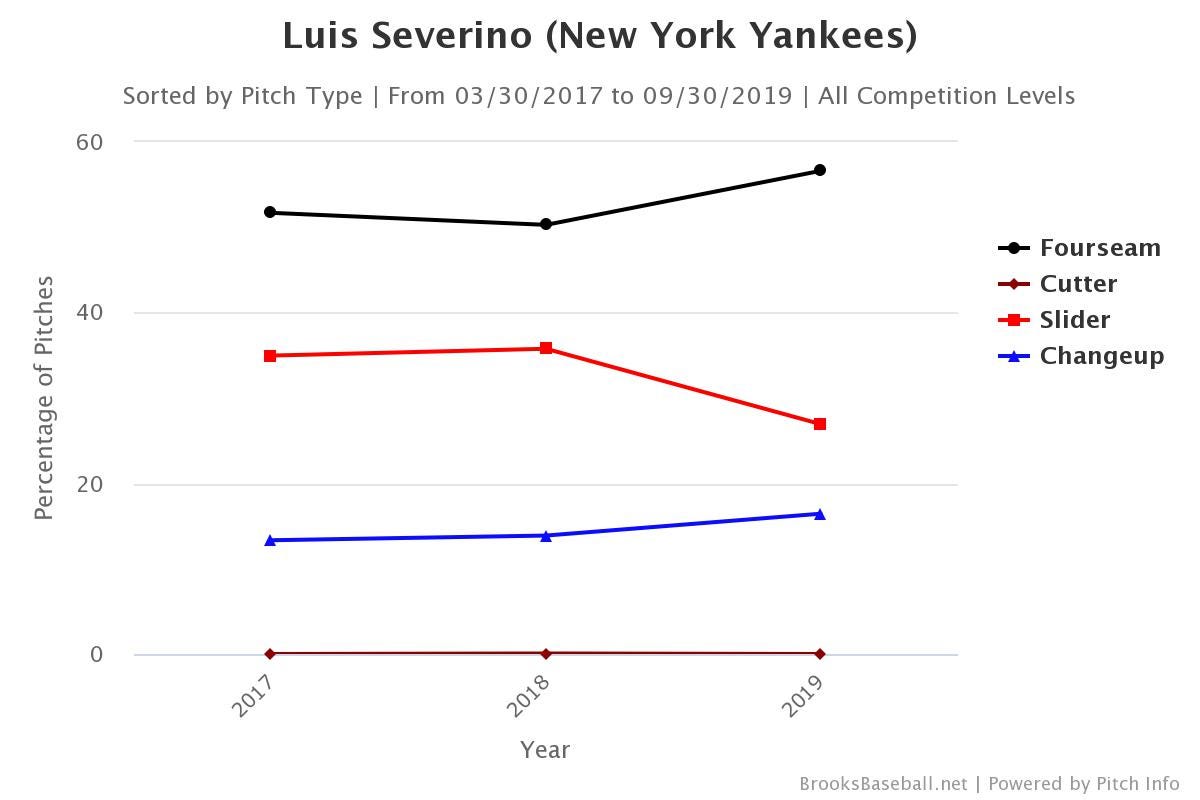
You can see the increase in fastballs as well as the decrease in sliders. There is also a slight uptick in changeups, but that could just be sample noise over 12 innings. It is possible Sevy is throwing more fastballs than before because he just came back from injury and is not yet comfortable throwing the slider as often. To me, that’s fine. It takes time to get back to who you were after such a long layoff, and I would look for an increase in sliders moving forward for Sevy.
Let’s see how hard he is throwing his pitches to see if his arm strength and velocity are what they were before:
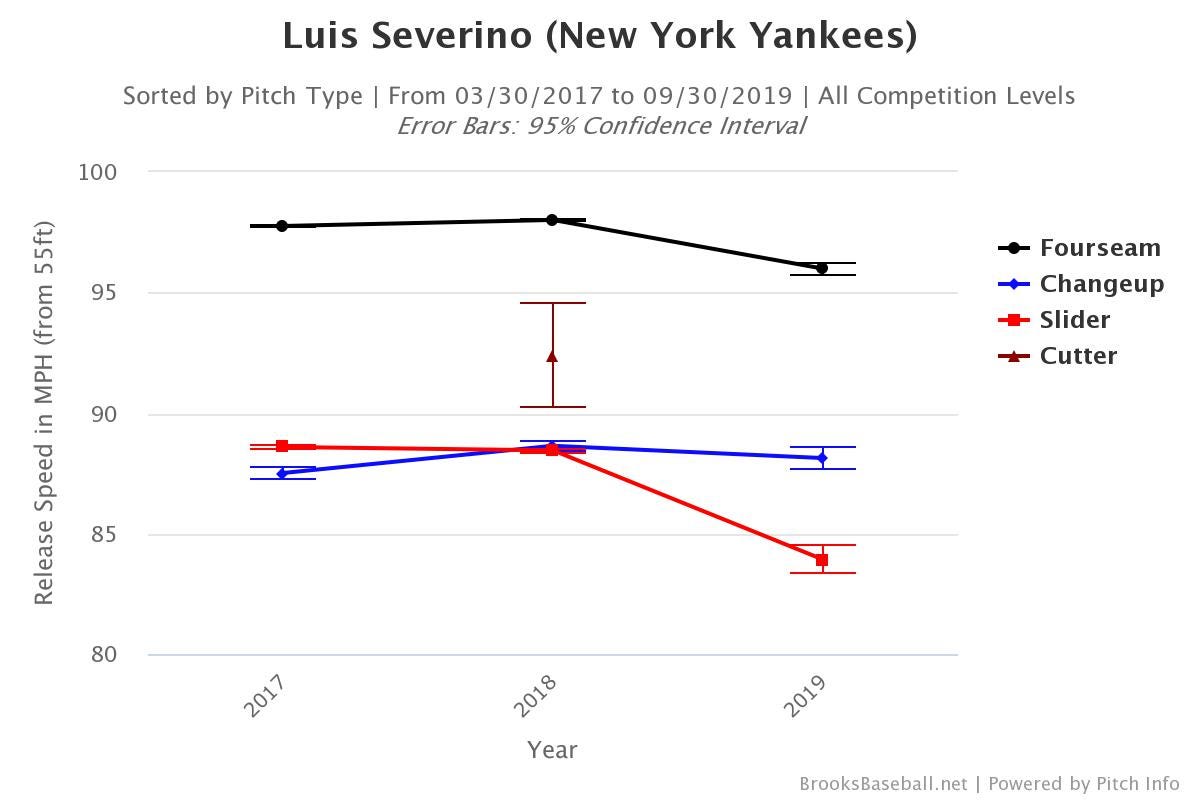
Okay, so this is definitely interesting. The fastball and slider velocity are both down whereas the changeup velocity is essentially the same. I’m not concerned about the fastball velocity decrease for a few reasons. He just came off the IL and I’m okay if he only wants to throw his fastball at 96 mph instead of his usual 98 mph. His max velocity on the season is over 99 mph, so we know he can still reach back for it when he needs. I would rather him hold back a little while he builds up rather than let it rip and get hurt again.
The slider velocity is a huge change – going from 88 mph to about 84, and I want to look at that in greater depth.
The slider
So it definitely looks like Sevy is playing around with his slider to find the right shape and speed that works for him. This GIF is probably the coolest thing I’ve found on Statcast to date, and it shows how Sevy has varied the slider velocity this year compared to last year:

You can clearly see the slider is no longer in that narrow window and it is noticeably slower than his changeup this season. It is possible Sevy wanted a pitch at another speed to give batters more to think about. When you fastball is 97 but both your off-speed pitches are 88, batters can sit on the fastball and easily adjust to something a little slower. If you can throw 96 but then have something come in at 82, that’s harder to account for and can mess with hitter’s timing.
The change in the slider velocity has also led to a change in its shape and movement
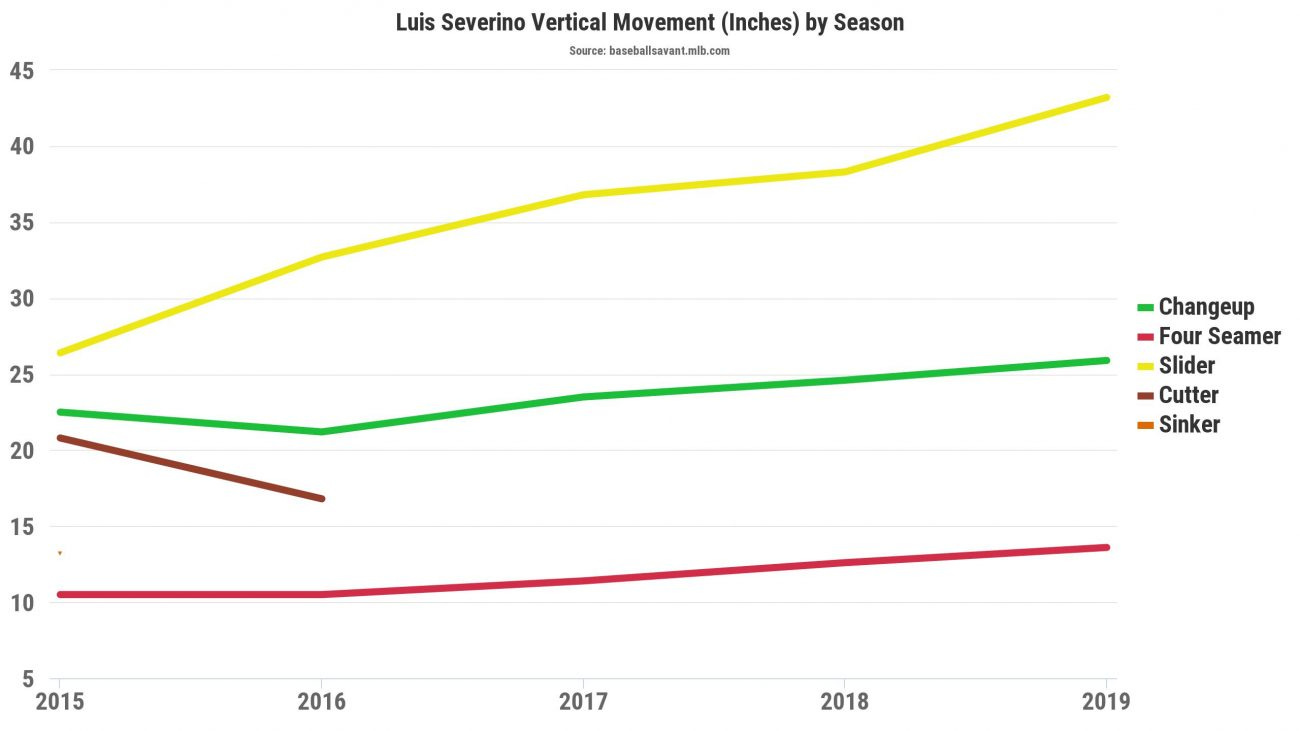
Look at the uptick in vertical movement for the slider from 2018 to 2019. That makes sense because with less velocity, the slider is able to have more drop. We’re seeing less of the sharp, tight slider from Sevy and more of a traditional slower pitch with huge amounts of movement. Again, this might be a temporary thing while he builds back up, but I suspect it’s more Sevy adjusting and trying to improve. In the playoffs, I’ll be monitoring Sevy’s slider velocity to see if he’s back to throwing it harder and sharper like in the past, or if he continues to use this slower version to keep hitters off-balance.
When we see a shift in movement and velocity, I always want to look at the spin rates to see if there is any change there as well. And good news, there isn’t much of a change for Sevy.
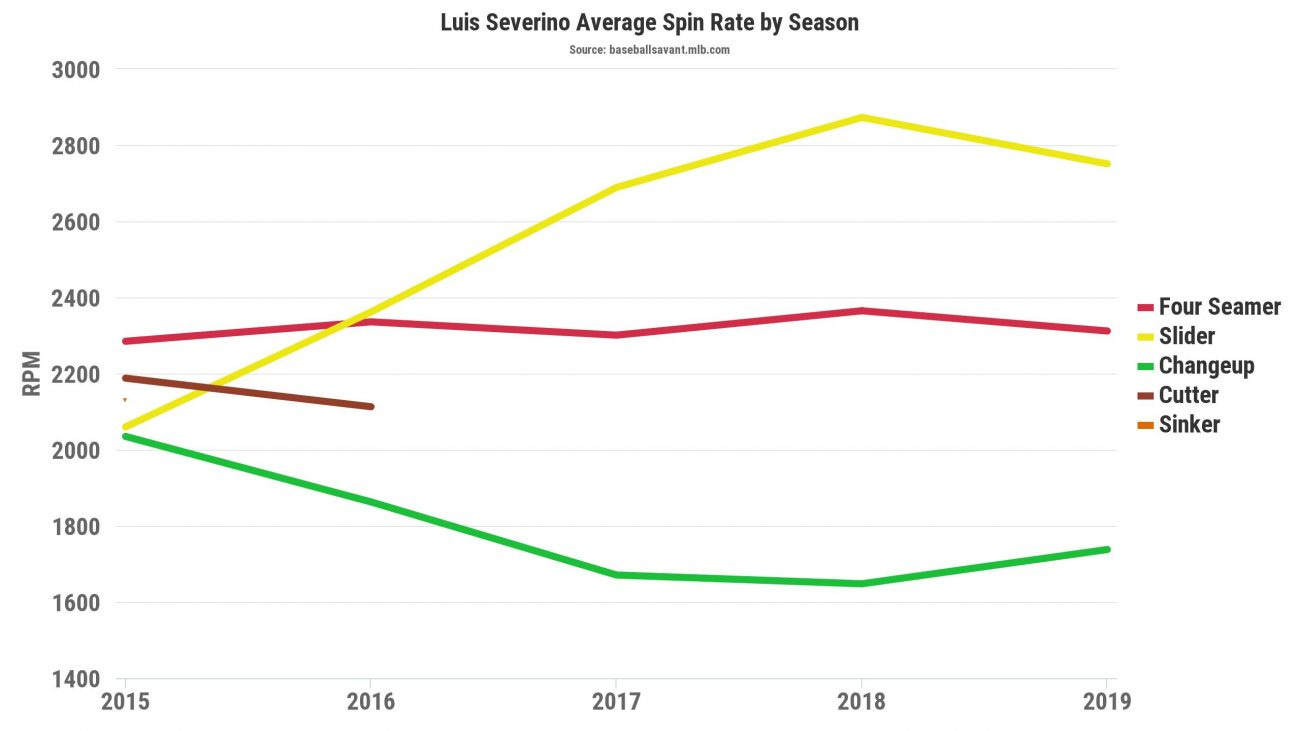
There is a slight decrease in the slider and fastball, but nothing I’m overly concerned about. Spin rates correlate quickly, so I would expect this to be Sevy’s spin rate for the foreseeable future. The great news is these spin rates are still elite, which tells us the ball is coming out of Sevy’s hand well.
The results
I mentioned some basic stats earlier, but let’s dig a little deeper into the numbers to see how Sevy has been and what we can expect moving forward.
Both the K and BB rates are high which means Sevy still has his swing and miss stuff, but his command is not fully back yet. A lot of that was influenced by his first inning on Saturday where he walked 3 batters. To me, that’s normal for a guy just coming back and I’m very encouraged by the strong K rates.
Looking at swing and miss rates, we see an increase in fastball whiff rate to over 30% which is up from 20% a year ago. That’s awesome to see – Sevy at his best can blow his fastball by people and he is still able to do that. The slider whiff rate is down from an unfathomable 37% to 28% so far. Again, that may be from Sevy’s tinkering and is something to look at moving forward.
I want to take a look at xwOBA because it informs what we can expect in the playoffs from Sevy:
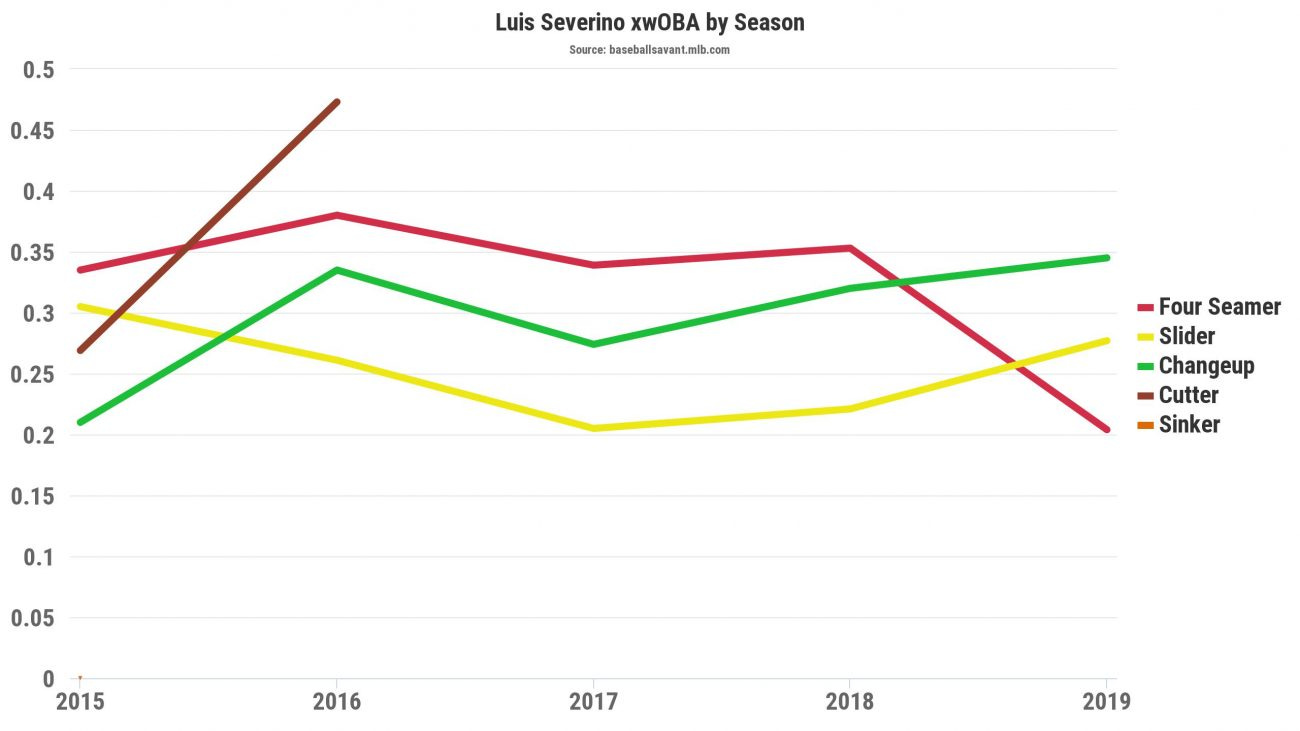
Okay, so that tells us a lot. Again, the fastball has been elite. An xwOBA of right at .200 is amazing on a pitch Sevy throws at least half the time. The offspeed pitches are still coming into form which is normal. Coming back from injury, the feel for a slider and changeup takes more time.
The last piece of data which is really encouraging to me is the type of contact hitters are making. So far, Sevy has a soft contact percentage of 33% and a hard contact percentage of 25%. Last year, those numbers were 19% and 35% respectively. That means hitters are having a harder time squaring up his pitches than they were before. And he was still one of the best pitchers in baseball before.
All of this data-digging and analysis basically tells us Sevy is back and could be better than ever. He is throwing a little slower than before, but his arm appears built back up and ready to go for the playoffs. There is a noticeable change in how his slider looks which could be a change he made to keep evolving as a pitcher.
Overall, it’s incredibly exciting to have Sevy back and he looks ready to dominate this postseason.
You can contact Rohan on Twitter @rohanarcot20


